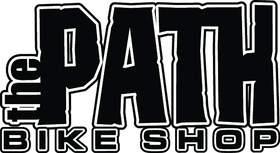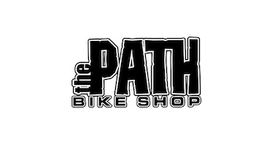Fools with Tools, Ep. 2: Chain Maintenance & Repair
Fools with Tools is back for another fun and informative episode! Tori and Zach cover mountain bike chain maintenance and repair, including how to clean and lube this essential component, and how to remove a damaged link, and install a quicklink to repair a broken chain.
How to Lube Your Chain:
Tools Used
- Chain Lube
- Shop Towel (Or any cloth you don't mind getting dirty)
- Prop bike up so cranks can be freely rotated.
- Start by inspecting the chain to make sure you have no twisted, bent or broken links.
- If the chain is in good condition, use a clean shop towel to wipe off most of the dirt and grime. Then rotate the cranks backwards, this will make lubing the chain easier. Wrap rag 100% of the way around chain to get good coverage while wiping. It also helps to move rag forward and backward along chain. Bending the chain while doing this can also help remove a little bit more of the stubborn dirt.

- After chain is wiped off, begin applying lube. Start at the masterlink so you know once you've gone around once entirely.
- Apply lube in large droplets to the rollers of the chain, do this while chain is in the smallest cog to minimize lube on cassette. Typically the lube is applied at the lower derailleur pulley area to minimize lube getting into hub bearings.

Note: Make sure to go around entire chain once.
- After the chain is coated, ideally you would let sit for several minutes to allow lube to soak into rollers, but if you can't wait (such as if this is a quick lube before a ride) just use a rag to slowly wipe off the excess lube from the chain, the cassette, and the derailleur pulleys.

Note: When applying and cleaning off lube, be careful not to get any on the rear brake as this will cause contamination and poor brake performance as well as excessive noise.
- Verify all gears are shifting smoothly.
How to Use a Chain Breaker Tool:
Tools Used
Note: Most current chain tools work with all drivetrain speeds
- Find link you need to remove, whether it's broken, or you’re sizing a new chain. If you’re installing a new masterlink, you will want to be left with an inner plate.
- Slide chain plates into support grooves on tool and begin to thread in the pin extractor. Note: You are making your overall chain shorter, and drivetrains are designed for very specific chain links to work properly. Sometimes variations in length can make the derailleur unsafe to use, as can happen if the chain is cut too short. If this does happen (such as an on-trail chain break), try to avoid putting your bike into the easiest gear until you are able to replace the chain.

- Line up the pin extractor and twist with force to remove the pin. It will be tight!
- You will feel a pop and an a decrease in tightness as the pin pops out of place. This is normal.

- Unthread the chain tool so that what is left is an empty inner plate.

How to Use Chain Pliers:
Tools Used
- Chain Pliers
- Masterlink (If a new one is needed)
- Determine if your masterlink is directional.
- Push the masterlink plates into their corresponding inner plates on the chain.

- The pins on the masterlink are designed to lock into the opposing link plate so orientate them accordingly and allow them to rest into place.
- Using force from standing on the chain, or master link pliers, spread the masterlinks until they snap together.




